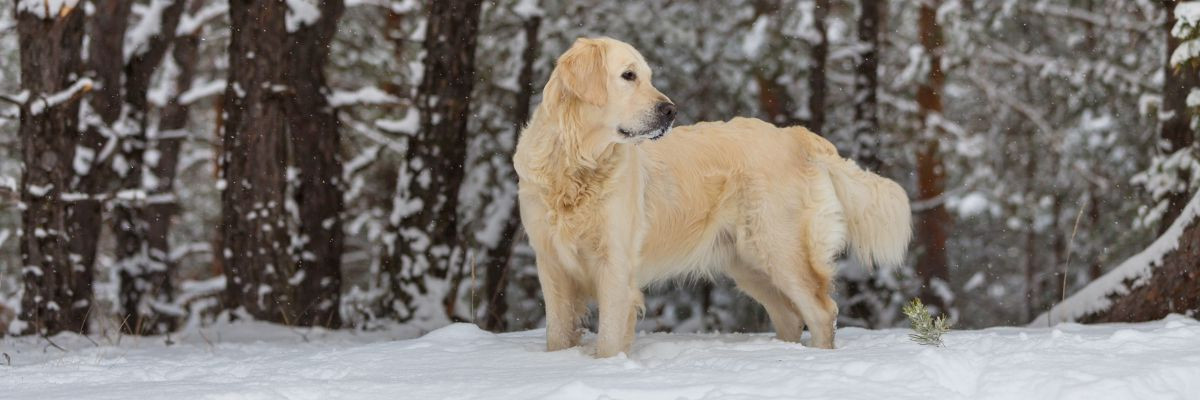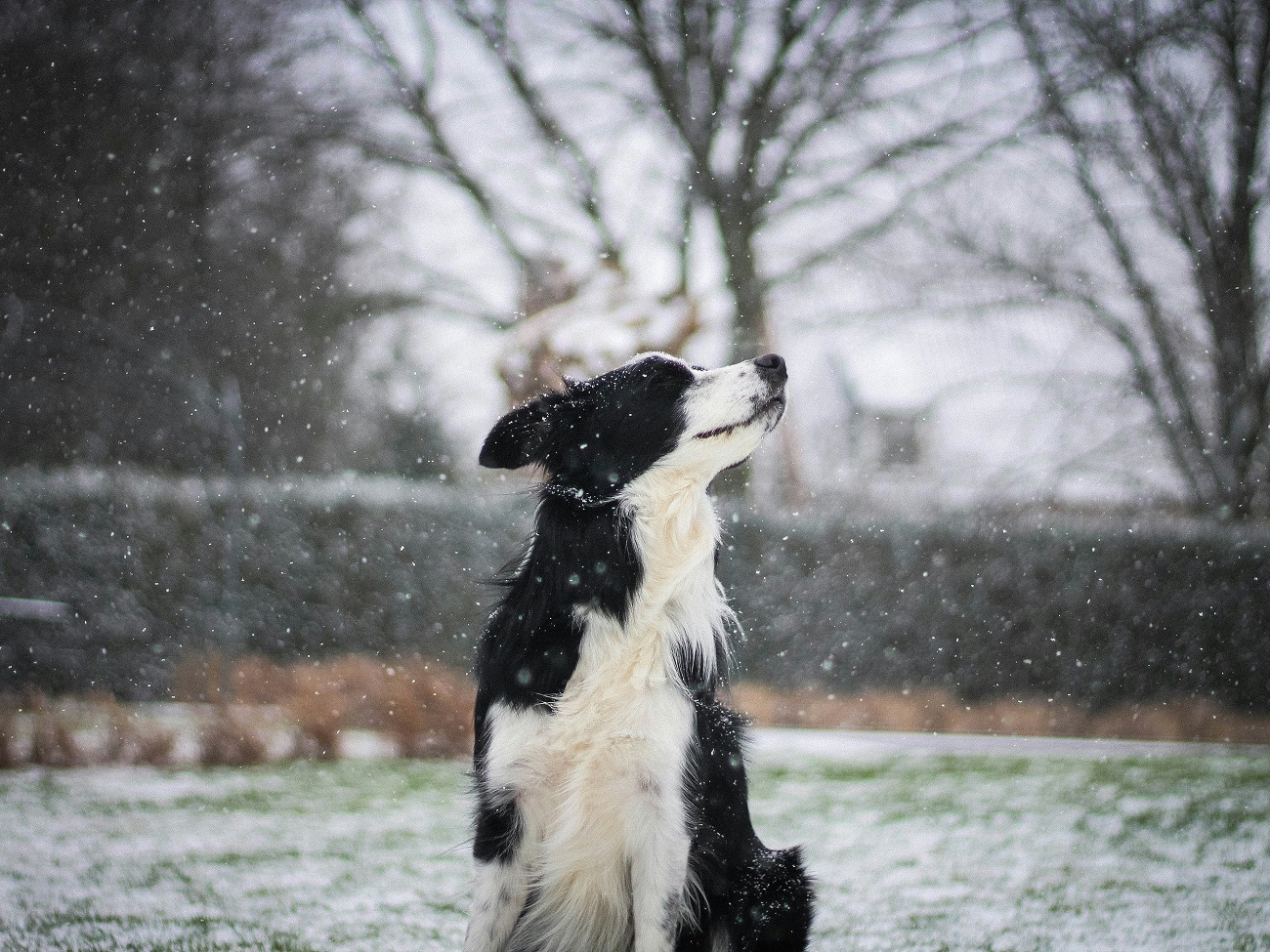Do you need help?

Understanding cold weather risks for dogs
Preparing your dog for colder temperatures during the winter months is essential. This preparation involves gradually acclimating them to the freezing weather, ensuring they have a warm and comfortable place to rest, and providing necessary clothing and accessories to keep them warm.
Various factors affecting a dog’s cold tolerance, including dog breed, size, age, and coat thickness, influence how well a dog can cope with lower temperatures. Vulnerable dogs, such as puppies, senior dogs, and those with health issues, are particularly sensitive to cold temperatures and require extra protection.
It’s also important to be aware of the potential dangers of winter weather, such as frostbite, hypothermia, and antifreeze poisoning.
Is it too cold? That depends on the dog’s breed
Dogs are just as sensitive to cold weather as humans. Hypothermia happens when a dog’s body temperature drops significantly, posing risks in extreme cold. Slim dogs with short hair, like Greyhounds, Whippets and Chihuahuas, are particularly susceptible to the cold. Additionally, you may notice that as dogs age, they become more sensitive to low temperatures.
Small breed dogs, those with thin coats, and especially older or sick dogs are particularly vulnerable in cold weather. Maintaining a dog’s body temperature is crucial to prevent frostbite or hypothermia, as extreme cold can limit blood flow to their extremities.
On the other hand, certain breeds, such as Alaskan Malamutes and St. Bernards, are naturally adapted to cold environments and typically do not need extra protection from the cold. These breeds may feel uncomfortable wearing a coat. However, individual tolerance can vary based on factors like coat condition, health, and acclimatisation.
Is it too cold? That depends on the weather
While temperature is crucial, other elements, such as wind chill, dampness, and cloud cover, can also impact how cold dogs feel.
Dogs can generate extra body heat during physical activities outdoors, which helps them remain comfortable in lower temperatures despite the cold environment. For breeds sensitive to the cold, temperatures below 7°C can cause discomfort.
Here are some temperature guidelines:
- 7 to 1°C: This range is fine for most dogs. However, small dogs, puppies, or those with thin coats may require a coat to stay warm.
- 1 to -4°C: This range can be potentially unsafe for short-haired dogs, small dogs, puppies, and elderly dogs. During this time, you should limit walks and be vigilant for signs of hypothermia.
- -4 to -9°C: While uncommon, temperatures in this range can be potentially life-threatening for smaller dogs, especially if wet. Wet dogs lose heat much faster, increasing the risk of hypothermia even in moderately cold temperatures.
To keep your dog safe, keep them indoors, particularly overnight, when temperatures can drop significantly.

What are signs of cold stress in dogs?
Dogs can exhibit various signs of cold stress, which are important to recognise. Like humans, dogs can catch colds, and exposure to cold weather can impact their immune system.
Shivering, whining, pulling their paws back, tucking their tail, and avoiding going outside indicate that your dog is feeling the cold. If your dog shows any of these signs, it’s crucial to warm them up and prevent further cold stress immediately.
Protecting your dog’s paws following walks in cold weather
Salt and chemicals used for treating roads and pavements can irritate your dog’s paws, especially if there are small cracks between their toes. To prevent discomfort, it’s important to wipe your dog’s paws thoroughly with a cloth and warm water as soon as you get home.
Protecting your dog’s paws is crucial during the winter months. If we get a cold snap or experience freezing weather, getting out and walking with your dog is great fun. But it’s important to regularly check their paws as ice and snow can ball up in the space between their toes, and there is also the risk of frostbite.
Maintain your dog’s weight over the winter
As daylight hours decrease and colder, wet weather sets in, it can be challenging to keep your dog active. This reduction in exercise compared to the summer months can contribute to obesity, which is an increasing concern in dogs and can lead to various health issues, both chronic and acute.
To help prevent weight gain during winter, monitor your dog’s weight and adjust their food portions as needed.
What to do if your dog ingests antifreeze
Antifreeze is the worst winter-time chemical spill, which can leak from a car’s radiator. Ethylene glycol, as it’s officially known, is highly dangerous. It is sweet-tasting and palatable, and even a small quantity can cause potentially fatal kidney damage.
In the early stages, your dog may exhibit signs of intoxication. Contact a vet immediately if you know or suspect your dog has ingested ethylene glycol. The longer you wait between ingestion and treatment, the worse the prognosis will be.
Prevent road traffic accidents in winter
Consider wearing a fluorescent jacket and collar on your dog when walking in low light or darkness. You might also attach a flashing light to your dog’s collar to make them more visible. Road traffic accidents significantly increase injuries and fatalities in dogs during winter months. Always ensure your dog is wearing an identification disc and is microchipped.
If you have any concerns about how the wintry weather is affecting your dog, consult your veterinarian. If it’s out-of-hours, please get in touch with your nearest Vet’s Now emergency clinic or schedule a video appointment with a vet available 24/7.

